Adventurous Kate contains affiliate links. If you make a purchase through these links, I will earn a commission at no extra cost to you. Thanks!
If you’re curious about Montenegro travel, you’ve come to the right place. I love teaching people about traveling in the Balkans, one of my favorite regions in the world, and especially telling people what it’s like to travel to Montenegro!
I loved Montenegro from the moment I first visited in 2012. How could this tiny country be so incredibly stunning? So many rugged mountains and clear teal lakes, so many fun adventure activities and picture-perfect old towns.
And from that first trip, I’ve kept coming back to Montenegro — for music festivals and mountain climbing, birthday celebrations and rafting trips, monastery-hopping and swimming in the Bay of Kotor.
This may be a small country — but it has so much to offer.
Here are things you need to know about Montenegro travel. (And don’t forget to check out my guide to the best things to do in Montenegro, too!)
Table of Contents
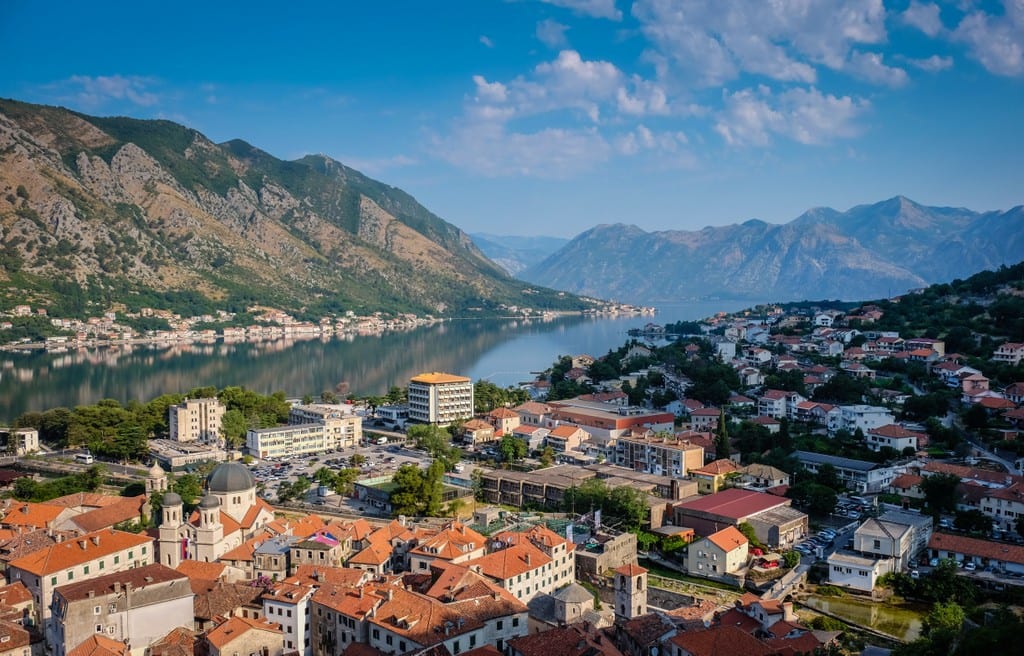
Montenegro is one of the most beautiful countries in the world.
I have frequently called Montenegro the most beautiful country in the world — or the most beautiful country in Europe. That’s high praise — and I don’t give it out lightly. (And yes, I’ve been to Iceland, Norway, Switzerland, you name it.)
While Croatia’s Adriatic coastline might get all the hype, Montenegro’s coastline has quite a bit of beauty as well. The Bay of Kotor is nothing short of spellbinding, with lush green mountains crashing down into clear teal water.
But that’s just the bay (which also happens to be the southernmost fjord in Europe). There are also the mountains. Once you head further inland, Montenegro is filled with stunning gray mountains interspersed with little tufts of greenery.
In fact, Montenegro’s name (Crna Gora) means Black Mountain, and was named for the dense evergreen forests on Mount Lovcen.
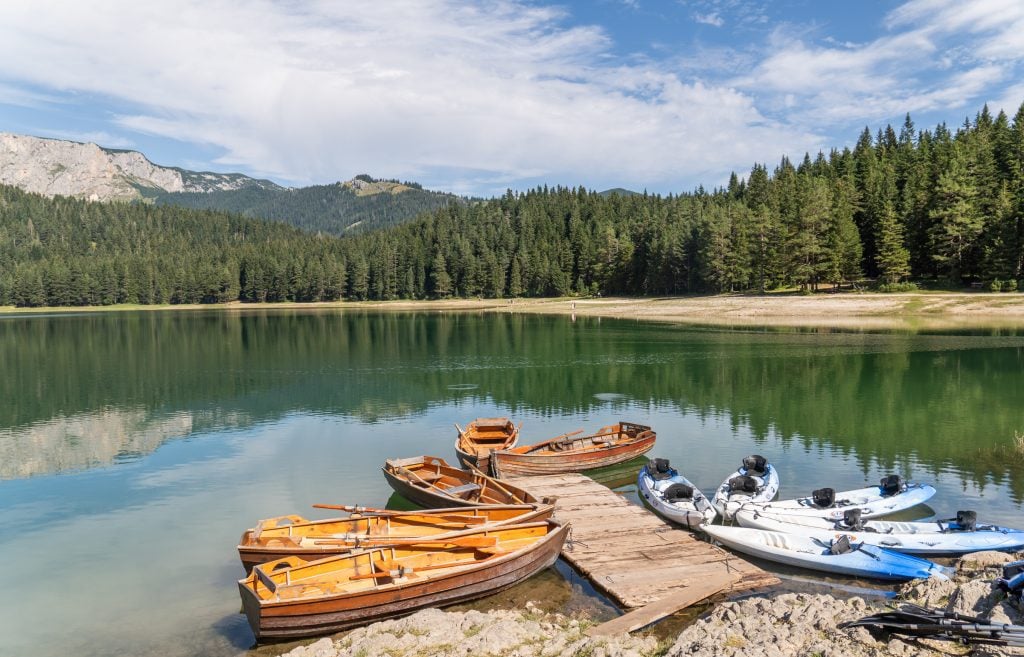
Where to go in Montenegro
Not super familiar with Montenegro? Check out my list of 30 best things to do in Montenegro. Here are some of the best places to visit in the country:
Bay of Kotor: This spectacularly gorgeous bay is the most touristed part of the country. Many, many day-trippers come over from Dubrovnik, and plenty more travelers just pop into Kotor and pop out a few days later. Cruise ship travelers base in Kotor as well.
Kotor is the most famous town to visit in the region and makes a good base for exploring both Kotor Bay and Montenegro as a whole. A tiny town close to Kotor is Perast, and gets a lot of day-trippers but also makes a good base for a few days. Herceg Novi is a big resort town close to the Croatian border; Tivat is home to the region’s international airport and gets a lot of moneyed yacht visitors.
A bit more inland but close to the bay, you have Lovćen National Park and the old royal capital of Cetinje, both worth a visit.
Budva Riviera: Budva is a major beach town in Montenegrin coast that has been drawing huge crowds of tourists for decades (and attracts lots of Russians in particular). This part of the country is home to high quality beaches. Some towns to visit beyond Budva itself include Sveti Stefan and Petrovac.
Northern Montenegro: This part of Montenegro is mountainous and rural, and is home to national parks including UNESCO World Heritage-listed Durmitor National Park, home to Black Lake and Tara River Canyon rafting, and, further east, beautiful and underrated Biogradska Gora National Park.
Central Montenegro: Central Montenegro is one of the lesser-visited parts of the country, but there are some cool places to visit here, like Ostrog Monastery, set into a rocky cliff.
Southern Montenegro: If Montenegro is shaped like a diamond, the bottom quadrant is home to quite a few various sites.
Here you have the scruffy yet popular beach towns of Bar and Ulcinj, which are a bit scruffier than the Budva Riviera and draw a more local Montenegrin and Albanian crowd. The current Montenegrin capital of Podgorica doesn’t have much to see, but nearby Stari Bar is a bit of a ghost town with ruins that were wrecked in the 1979 earthquake.
Skadar Lake National Park is home to the largest lake in the Balkans and is a very interesting place to spend an afternoon.
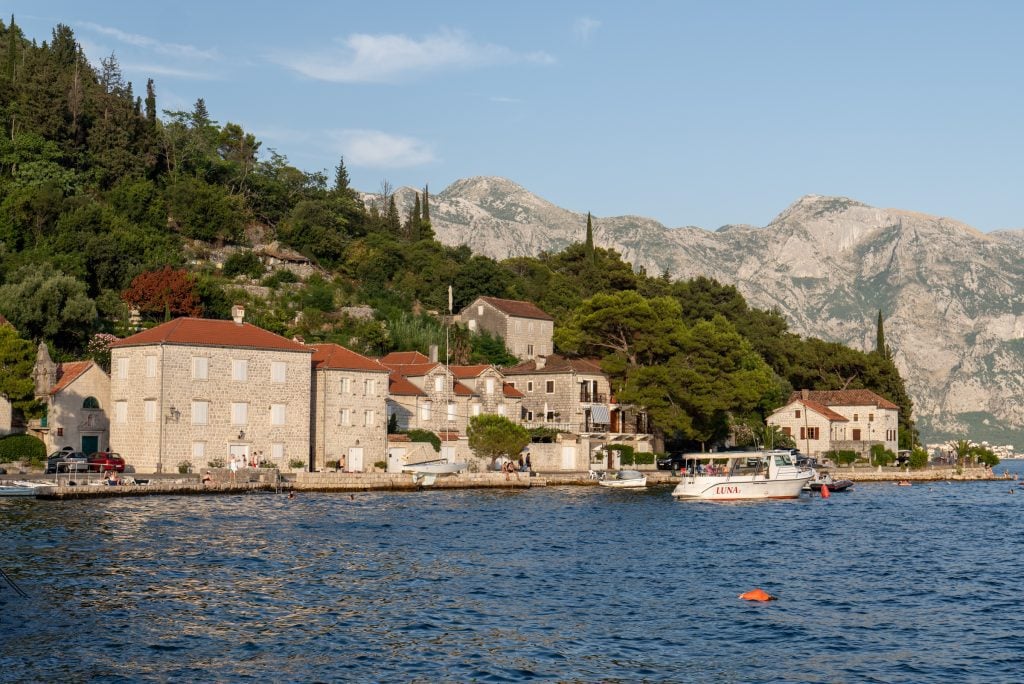
Is Montenegro the new Croatia? Not really.
Everyone loves to declare places the “new” something. Riga is the new Prague! Medellín is the new Chiang Mai! Mahahual is the new Playa del Carmen! And plenty of people have been calling Montenegro the new Croatia for years. (And, in turn, Albania the new Montenegro.)
Is that true? I don’t really think so. While Montenegro might have similar dramatic coastline, along with rocky but not sandy beaches, Montenegro is light years away from Croatia in terms of infrastructure for travelers.
What does that mean? There are no ride-sharing apps that work in the country, buses won’t honor internet-purchased tickets unless you print them out, the highways have a single lane in each direction and get backed up, and while there are some nice hotels here, most accommodation tends to be at a more basic level. Many tourism businesses don’t have much of an online presence, either, beyond a WhatsApp number to call.
I’m not saying this to insult Montenegro — far from that! I love it here. Just know before you come that travel here is a lot more basic — especially if you’re used to traveling in Western Europe.
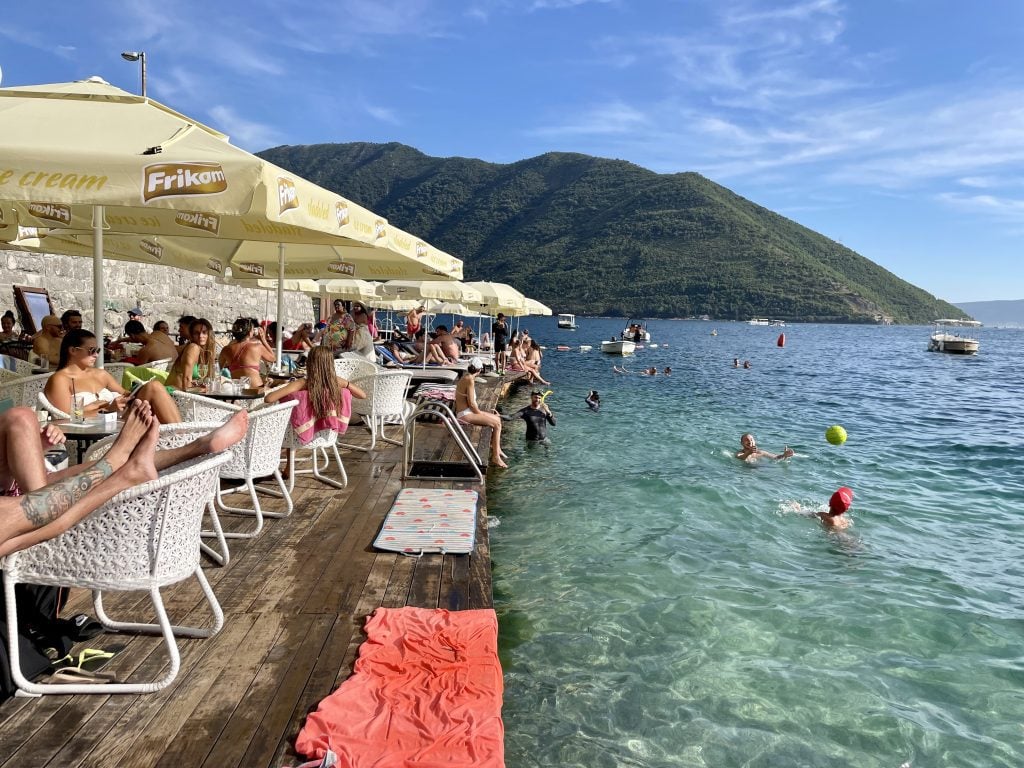
When’s the best time to visit Montenegro?
To me, Montenegro is a quintessential summer destination. Between swimming in the Adriatic Sea, hiking through the mountains, and hopping through the gorgeous towns, Montenegro is like drinking in sunshine. That’s why I wanted to return for my recent birthday in August.
Montenegro has a Mediterranean climate, though much of the weather depends on the elevation. The coastal regions tend to be much warmer and rainier than the inland mountain regions, which are cooler and get a good amount of snow in the winter months.
July and August are peak season in Montenegro; June through September is high season. However, I don’t recommend visiting during July or August if you don’t have to. I most recently visited in August and the traffic along the coastline was NUTS. Cruise ships were NONSTOP. The towns were PACKED. Taxis were charging INSANE prices (more on that below).
If you enjoy summer weather, I recommend visiting Montenegro from early to mid-June or mid-September to early October. It will still be summery and gorgeous — just a lot more peaceful of an experience!
What about shoulder season? Absolutely! If you don’t care about swimming in the sea or sunning yourself, spring and fall can be great times of year to travel in Montenegro. Shoulder season is especially good for hiking and outdoor adventure.
Winter will be very quiet, with many businesses on the coastline closed — but it’s a great time for skiing in the mountains. Skiing in Montenegro is absolutely a thing (look to the Dinaric Alps), and it will cost you a fraction of what you’d pay in the Swiss or Italian Alps.
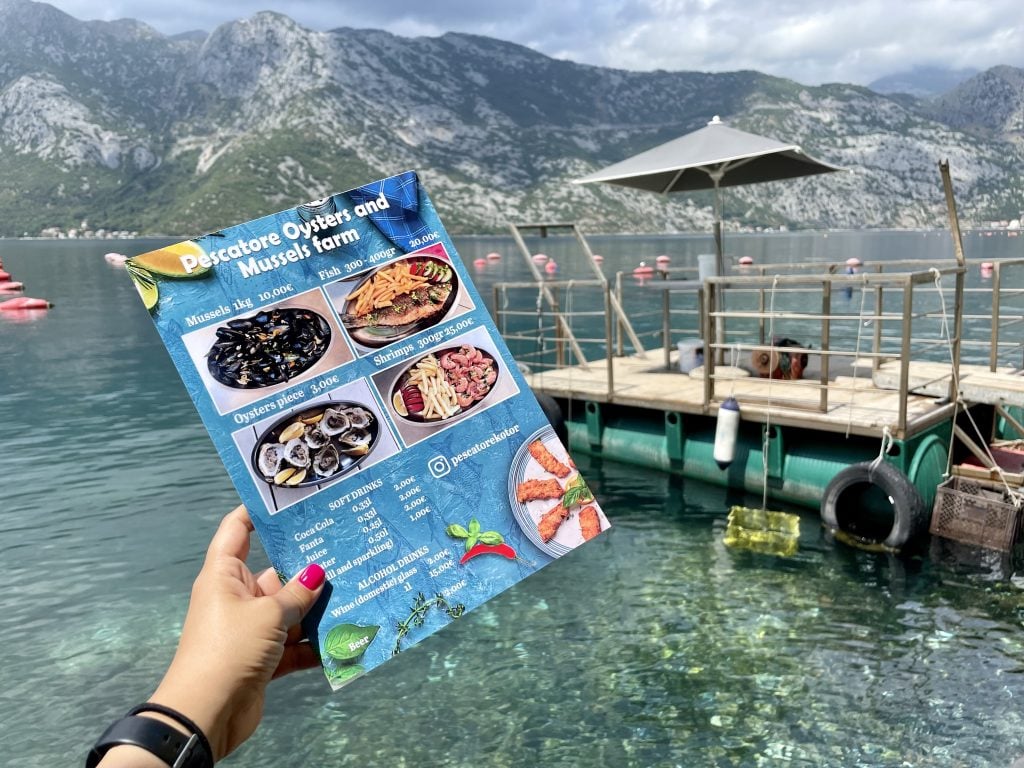
Is Montenegro expensive or cheap? Yes.
For decades, guidebook authors have been encouraging Europe travelers on a budget to head east. You’ll get far more for your money in Budapest than Paris!
The reality of that today? KIND of true, but not always. (After all I live in Prague, once a famously cheap European getaway, but now I often spend less in Italy than I do in Prague. Italy!!)
The Western Balkans — consisting of the former Yugoslavia and Albania — often get you quite a bit for your money. North Macedonia, Serbia, Bosnia, Kosovo, and Albania are very budget-friendly destinations, while Slovenia has grown more expensive and much of Croatia has become significantly more expensive, especially Dubrovnik.
So how expensive is Montenegro? It depends on where you go.
Kotor and Perast? Very expensive. These popular hotspots on the Bay of Kotor get a lot of tourism, and thus prices are driven far up. Budva and its southern beaches are only a bit cheaper than Kotor and Perast, though there are some deals to be had.
Southern beach destinations in Montenegro like Ulcinj and Bar that draw local visitors are a bit shabbier and a good amount cheaper than the beaches further north.
But once you head deep into inland Montenegro — think Durmitor National Park and Biogradska Gorda — prices drop significantly and are more on par with Serbian prices. Even heading slightly inland from the coast can make a big difference in prices.
It’s the same as anywhere else in the world: cities, coastal destinations, and tourist hotspots tend to be most expensive. Rural, inland, less popular destinations tend to be cheaper.
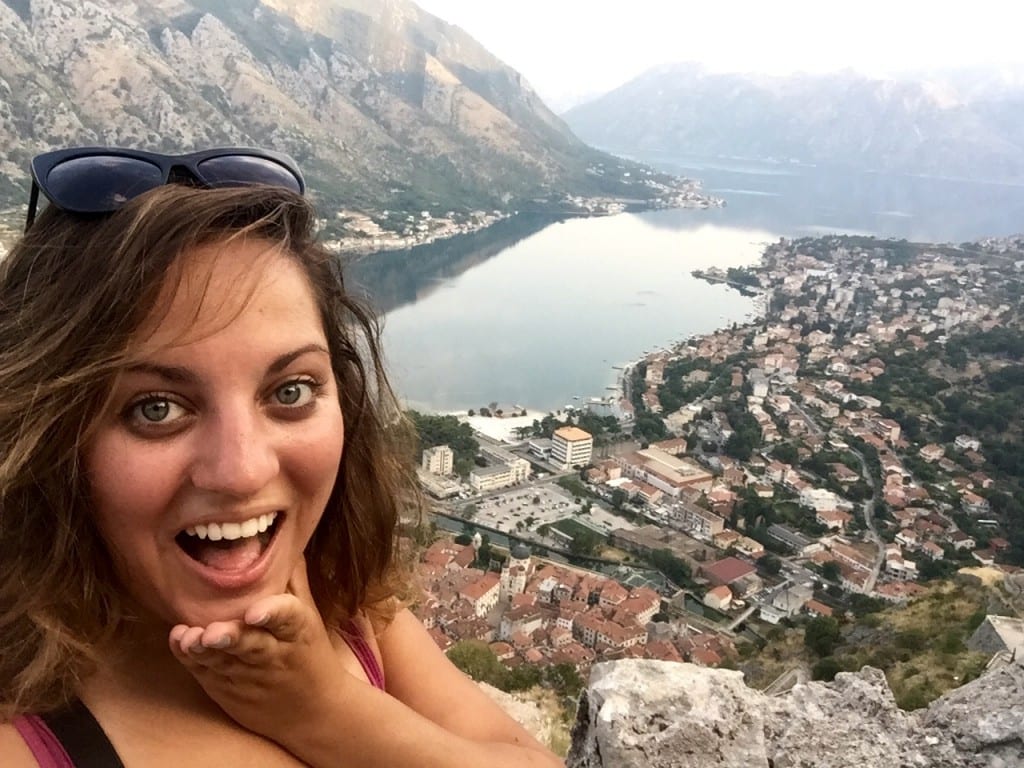
Is Montenegro safe?
Montenegro is as safe as most destinations in Europe — which means it may be safer than your hometown. Do what you would do in any other destination — keep your valuables on you in transit, don’t drink too much, stay aware of your surroundings, keep in touch with someone at home.
I’ve traveled in Montenegro as a solo female traveler and I felt very safe the whole time. I’d travel solo in Montenegro anytime. (Have you seen my top 10 travel safety tips for women? Definitely check them out if you haven’t yet.)
Are there any Montenegro-specific safety precautions to take? A few.
Be cautious of petty theft. Pickpocketing can happen in busy towns like Kotor and Budva, especially in their dark, twisty old towns. Keep your belongings in a zip-up crossbody purse, don’t take more money and cards than you need for the day, and lock up the rest in your room in a portable safe.
Be careful on the roads. Roads in Montenegro tend to be narrow and winding, especially once you get deeper inland. Many of these switchback-filled roads that are safe, but you need to go much more slowly than usual. Be careful where you stop to take pictures, too. There are rarely guardrails at scenic overlooks. Allot extra time for your drive so you don’t have to speed.
Practice safety when hiking. Talk with a local before you head out on a hike, check the weather, make sure it’s currently safe and passable, and let your hotel know where you’re going and when you should be back. Be cautious of snowstorms in the mountains from fall through spring.
Don’t go drink for drink with Montenegrins, especially if rakija is involved. Like Serbians, Montenegrins LOVE to share rakija with visitors and will offer it often, especially if you’re a man (my husband even got offered rakija at BREAKFAST once!). You do not have anywhere close to their rakija tolerance — I recommend trying one shot, max, only if you’re not driving, or politely turning them down.
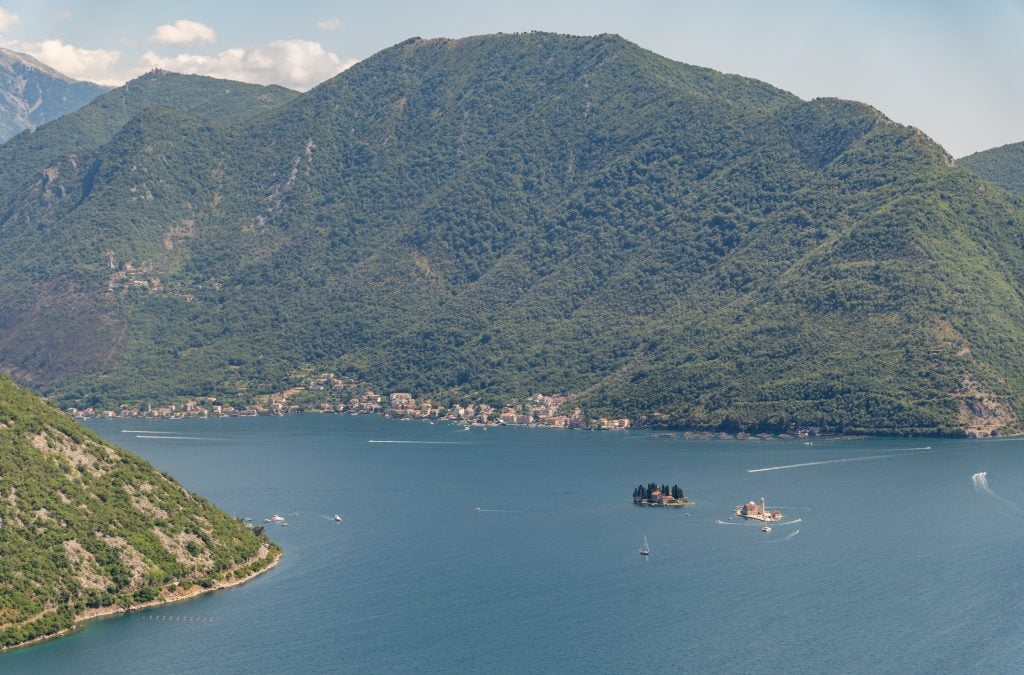
How to get to Montenegro
There are two international airports in Montenegro: Tivat, which is on the Bay of Kotor; and Podgorica, the capital. If you’re flying directly in, you’ll want to aim for one of those two airports. Neither airport is super well-connected, especially outside the summer months, but you can find your way via some larger cities.
Some people like to fly to Dubrovnik and head to Montenegro from there. I’ve done that before myself. The border is a bit of a pain, but it might fit into your trip better, especially if you’re adding on time in Croatia.
Alternatively, you can get to the city of Bar, Montenegro, two different ways: there is a Montenegro Lines ferry from Bari, Italy, as well as a train from Belgrade, Serbia.
Otherwise, you’ll be arriving overland by car or bus. For this reason, travelers often pair Montenegro with another country or two (I always have!). You can easily add Montenegro to a southern Croatia itinerary, or add Montenegro to a longer trip through Serbia, Bosnia, or Albania.
(Just let your rental car company know if you plan on crossing borders.)
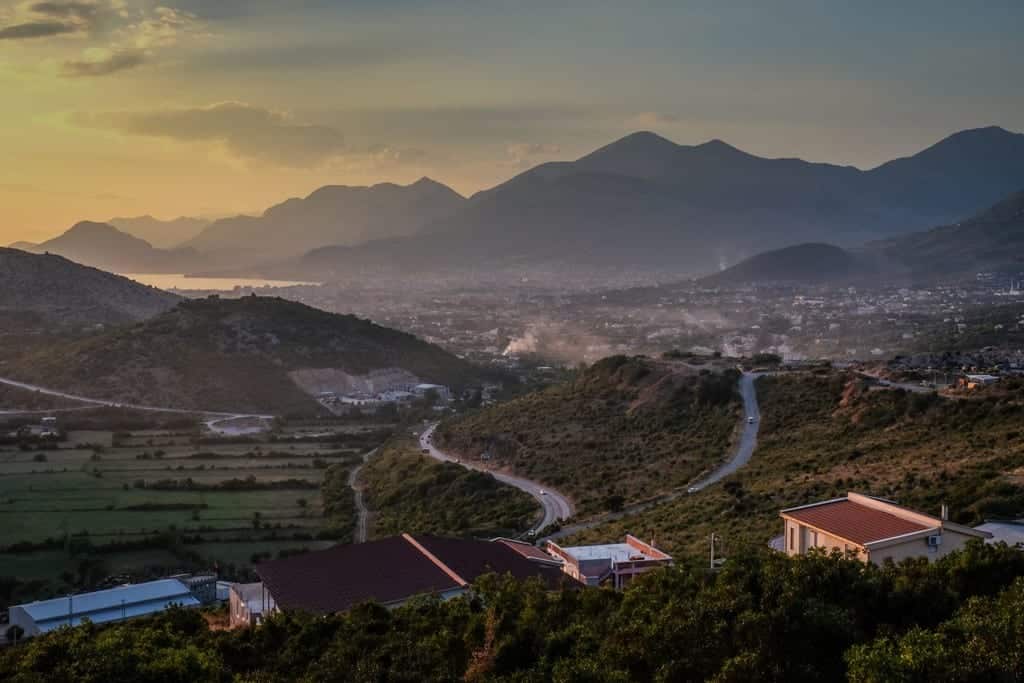
Montenegro is not in the Schengen Zone.
Like many of the Balkan countries, Montenegro is not part of the Schengen Zone. The Schengen Area is a group of 27 nations in Europe that have open borders.
Long-term travelers and digital nomads in Europe can only be in the Schengen Zone 90 days within a 180-day period. As a result, lots of these people are looking for nice non-Schengen areas to spend their time until they can return to the Schengen Zone.
So yes! Montenegro is not Schengen, so it makes a nice place to visit if you need to leave the area for awhile.
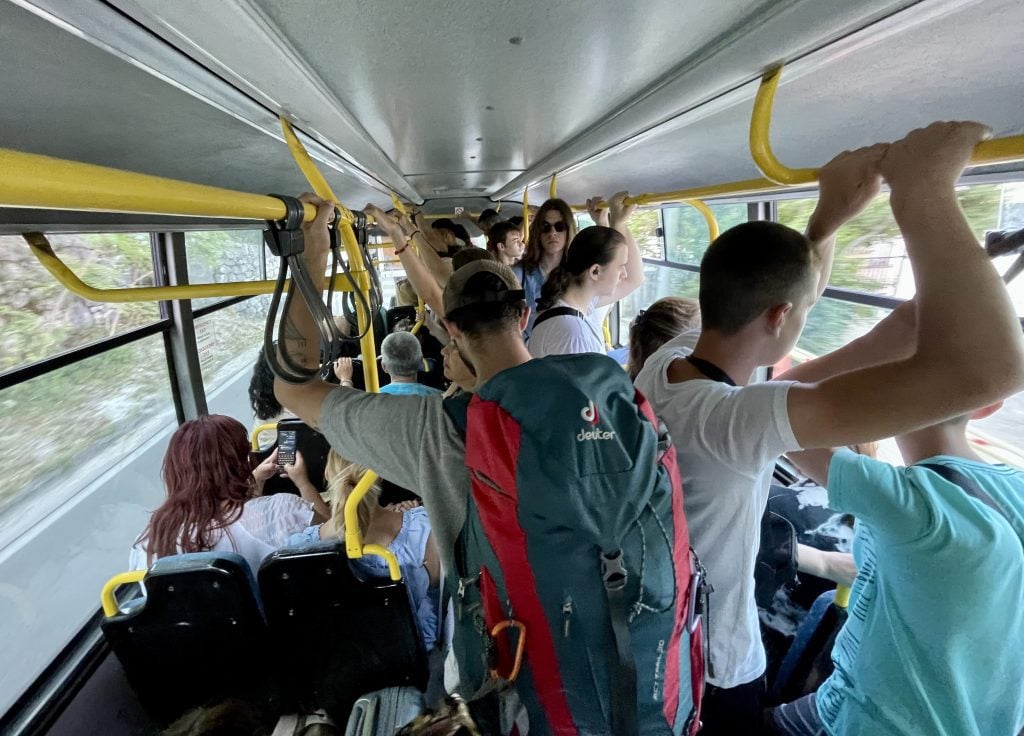
Can you do public transportation in Montenegro? Yes, but it’s a pain.
Montenegro travel can be done either with or without a car. I’ve done two Montenegro trips without a car and one with a car and honestly, having a car makes travel in Montenegro so much easier.
If you just want to do a quick Bay of Kotor trip, or maybe Kotor and a day trip to Durmitor, you can get away without a car. If you want to travel Montenegro comprehensively, you will absolutely need a car.
So what kind of public transport is there in Montenegro?
Bus: Buses are the main way to get around Montenegro, including points beyond the country’s borders. You can buy tickets at bus stations in cities that have them.
The Blue Line bus travels along the Bay of Kotor, from Herceg Novi to Kotor, stopping at most towns along the way, though know that buses can be late and packed to the gills.
Important note: you MUST have tickets printed out if you buy them in advance. Having them on your phone screen won’t work. I bought tickets through BusTicket4Me, a Montenegrin company, and they wouldn’t let me on because it wasn’t printed out!! If you don’t have a printer, you can have the bus station print them out for you, but it might be a long wraparound line, as it was the day I did it.
Train: Surprise, there’s a train in Montenegro — and it’s actually a gorgeous journey! There is a train that runs between Bar and Belgrade, Serbia, stopping at Podgorica and Bijelo Pole en route. This can be an all-day or overnight journey (13 hours by day, 9 hours overnight).
Ferry: If you want to skip the long drive around Boka Bay (on the Bay of Kotor), there is a short ferry between Kamenari and Lepetane. Ferries run constantly as they fill, take 10 minutes, and cost 4.50 EUR ($5 USD).
Internationally, there is a ferry that runs between Bar and Bari, Italy, on Montenegro Lines. The journey takes nine hours.
Tourist shuttles: Montenegro Hostel offers tourist shuttles (good-quality buses and vans that take you direct from hotspot to hotspot so you don’t have to change buses several times). I took their shuttle from Tirana to Budva once and it was a lovely, comfortable, air-conditioned experience. You can take them from destinations in Montenegro to Dubrovnik, Croatia; Mostar, Bosnia; and Tirana, Albania.
Hop-On, Hop-Off Bus: There is now a hop-on-hop-off bus in Montenegro running along the Bay of Kotor between Risan and Kotor. At 25 EUR ($27 USD) for 24 hours, I think it’s a deal if you are traveling solo and would be taking taxis otherwise. Honestly, I would LOVE it if it continued to Budva or even Sveti Stefan or Petrovac. Hope they expand it in the future.
Taxis: Frustratingly, Montenegro doesn’t have Uber or any ride-sharing or ride-hailing apps. Taxis can and will charge high fees, especially on the Bay of Kotor. In 2023 I was quoted 50 EUR ($53 USD) for a 30-minute one-way trip from Kotor to Budva!
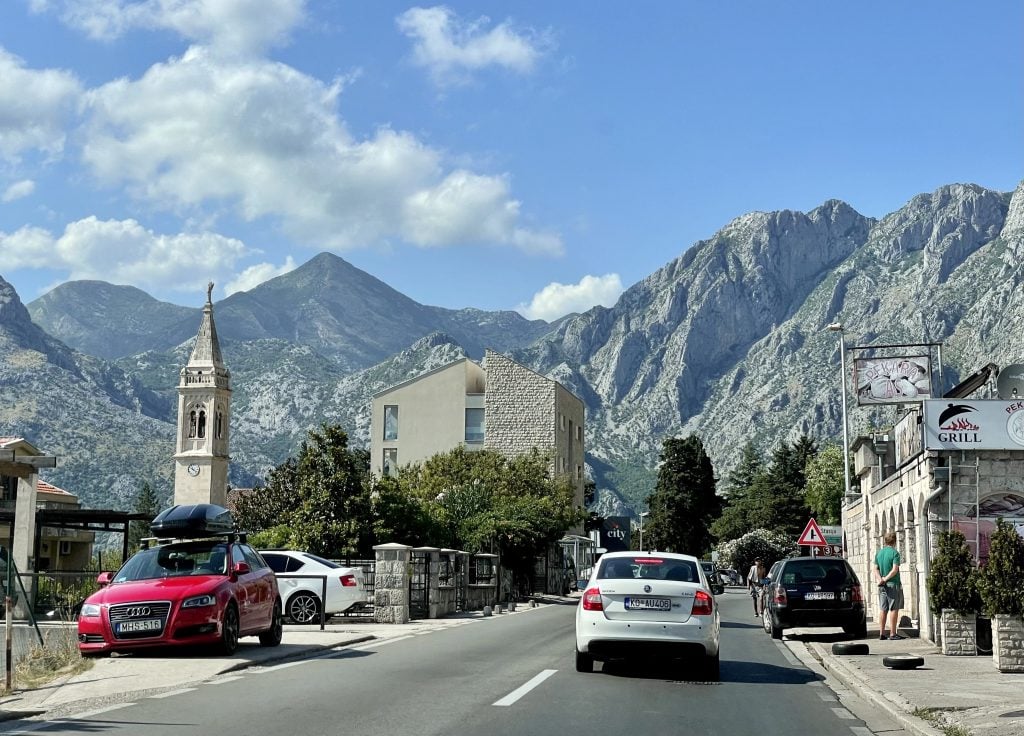
Driving in Montenegro has its challenges.
If you’re going to rent your own car in Montenegro, great! You’re going to get to see so much more this way.
However, you should plan for all of your drives to take much longer than you expect. Montenegro might be the size of Connecticut, but you shouldn’t expect to get from Herceg Novi to Ulcinj as quickly as you can get from Greenwich to New London. (Or maybe you can. I went to college in Connecticut and traffic there is pretty gnarly.)
There aren’t any wide highways in Montenegro. Major roads in the mountains may look like highways on Google Maps, but they are often very narrow and curvy with one lane of traffic in each direction. You often have to slow down to drive these roads safely, and once we even had to drive through a landslide!
That said, these roads tend to be in good condition and driving is smooth. Your main concern is switchbacks in mountainous areas, and there are tons of tunnels.
During the summer months, traffic is terrible along the coast. Once again, the only road along the coastline has a single lane in each direction. Know this ahead of time, and plan a flexible schedule in case you get stuck. (Otherwise, visit during another time of year. Even June and September can be better than July and August.)
As for Montenegrin drivers? They can occasionally get a bit aggressive, but it’s nothing on the level of what I saw in Albania or, shockingly, Slovenia.
Parking in Montenegro can be a huge pain during the summer months, especially along the coast (we literally had to sit and wait for someone to leave Perast in order to park there). Again, consider visiting outside of July or August, and consider just paying for parking to have less of a headache.
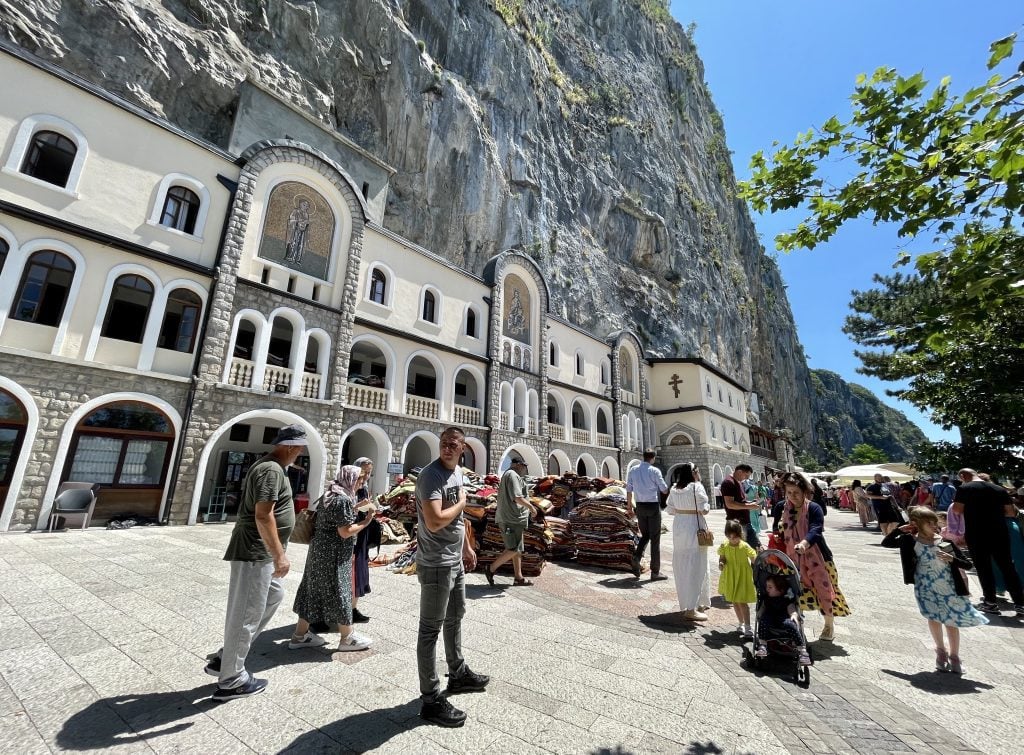
Do people speak English in Montenegro?
The local language in Montenegro is Montenegrin, one of the Serbo-Croatian languages. That said, isn’t much of a language barrier in Montenegro — in areas catering to foreign tourists, that is — so if you only speak English, you’ll be okay.
Like in many parts of Central Europe and the Balkans, everyone who works in tourism speaks English. In more rural, less touristy areas, you’ll find that younger people (under 40) tend to speak English while older people do not.
While Montenegrin uses two alphabets — the Latin alphabet and the Cyrillic alphabet — most signage in Montenegro uses the Latin alphabet. This is a big difference from Serbia, which leans more on Cyrillic.
You’ll find that menus in Montenegro tend to be in the local Montenegrin language, English, Russian (Russians especially love the Budva Riviera), German (Germans go everywhere), and Italian (perché no?).
Finally — speak any Slavic languages? You might be able to get by occasionally in Montenegro! My husband Charlie speaks Czech, and a few times he was able to speak Czech with Montenegrins and they got the gist of what the other person saying.
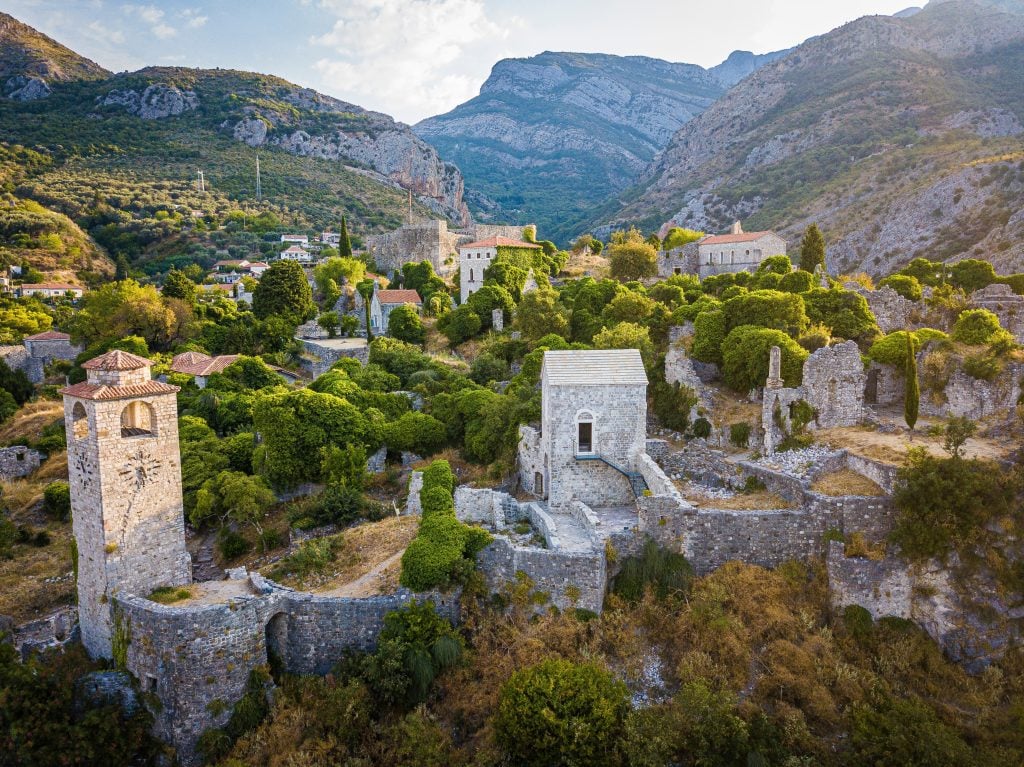
How does money work in Montenegro?
Montenegro is not part of the European Union, but they use the euro as currency. I keep the Currency app on the home page of my phone and use it constantly to double-check what prices are (not as much in Montenegro, as euros are pretty close to US dollars, but you bet I use it a ton in the Czech Republic where the rate is a hard-to-calculate 22:1!).
Here are some money tips for Montenegro:
Avoid Euronet ATMs. These ATMs are found throughout Europe and will RIP YOU OFF. Instead, use an ATM attached to a physical bank. (Added bonus: in the unlikely event your card gets eaten, it can be saved from a bank ATM.)
If it asks whether to charge you in euros or your home currency, ALWAYS choose euros or whatever the local currency is. This might appear on an ATM screen as “Will you accept the conversion?” Always say no — it will still work. Or when paying by card, it may ask you which currency to charge. Always the local currency.
I know, this doesn’t feel intuitive. But they end up charging you a lot more when they convert the rate.
You can use your credit card for most transactions in Montenegro. I use cards whenever possible — both for points and to keep better track of my spending in YNAB, my budgeting software (which I ADORE). However, it’s always a good idea to carry a small amount of euros for small purchases or when businesses don’t accept cards.
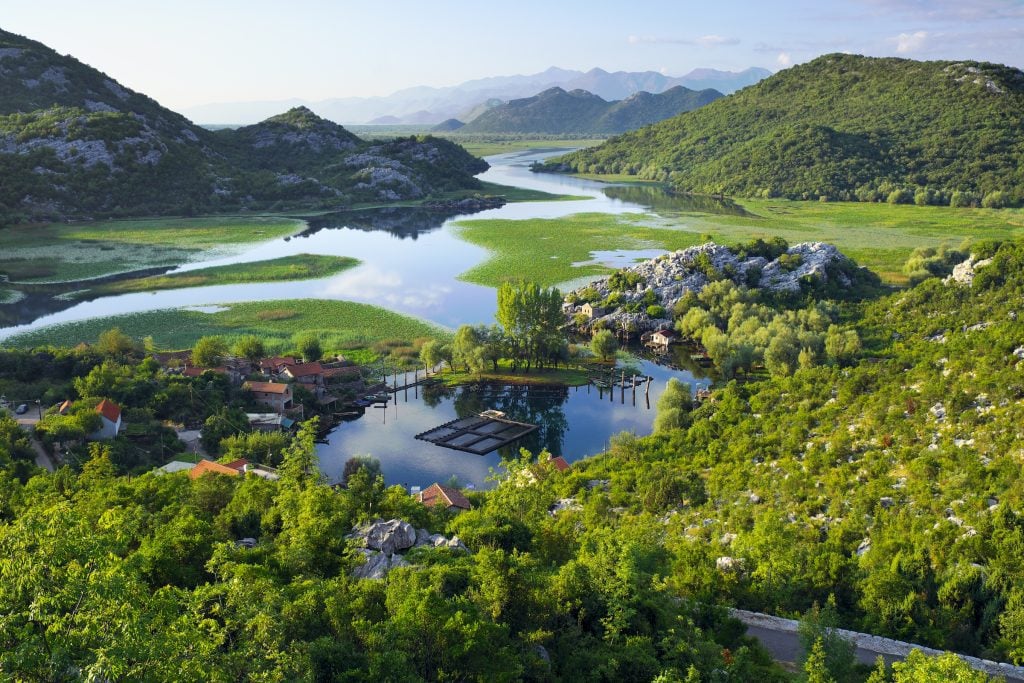
Will your phone work in Montenegro?
Do not use your home phone plan abroad — they will likely charge you ABSURD fees. Additionally, if you have an EU SIM card, know that it will not work in Montenegro.
But should you just rely on wifi in Montenegro? I don’t recommend it. Having working internet on your phone is a safety issue.
Instead, get an eSIM. I used to always get a real SIM card in Montenegro, but eSIMs exist now and they’re fantastic, as you can buy them at home without going to a store.
Nowadays I buy my eSIMs from Airalo. You can see their Montenegro eSIMs here. At the time of publication, you can get 3 GB of data for $15.
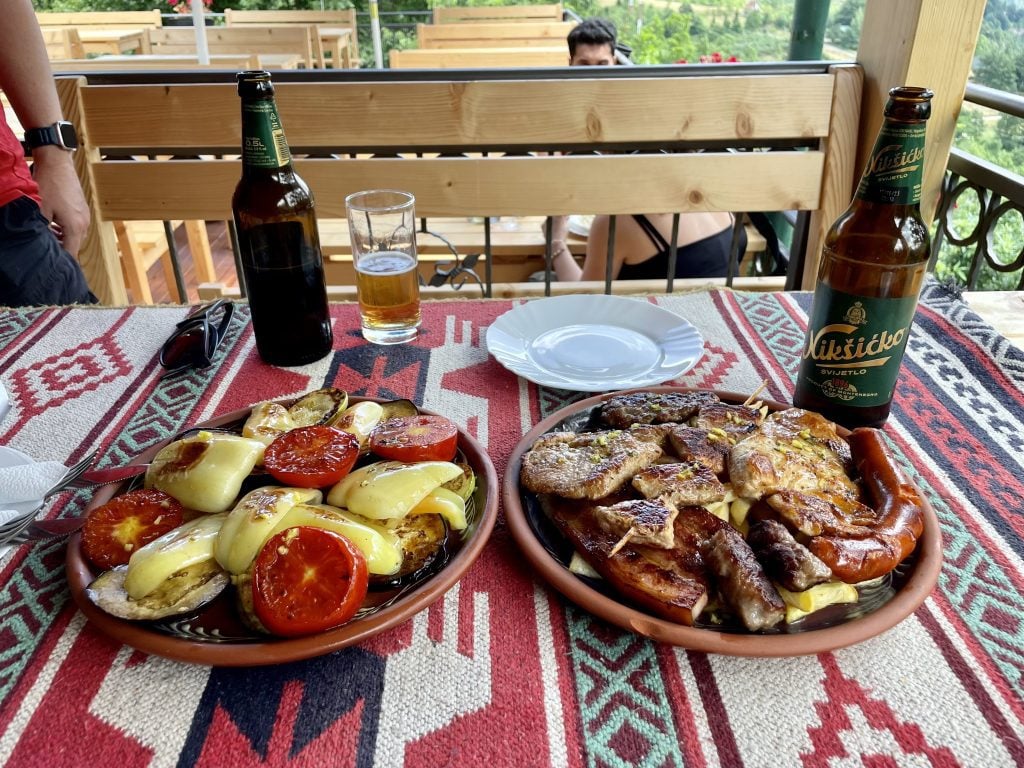
What is Montenegrin food and what will you be eating?
Diving into Montenegrin cuisine? Get ready to eat a lot of meat. (Unless you don’t eat meat, that is — you can avoid it if you want to.) Montenegro, like many Balkan countries, is really big on the meat consumption, especially up in the mountains.
It’s common to get a mixed grill featuring pork, lamb, veal, and chicken, as well as a big platter of tomatoes, peppers, and zucchini. Another meat dish is ćevapi (cheh-VA-pee), rolled minced grilled meat, often served in a pita. My husband is obsessed with pljeskavica, a Balkan burger made from pork, beef, and lamb.
Two sauces to try with your meat are kajmak (KY-mack), which is like clotted cream, and ajvar (I-var), made from roasted red peppers.
Along the coastline, you’ll find plenty of local seafood, with fish stews featuring prominently on many menus. A lot of mussel and oyster farms in the Bay of Kotor have simple restaurants operating out of shacks. You’ll never find fresher seafood than this!
In more touristy destinations, you’ll find slightly more international food options — along with a lot of pizza and pasta. (The quality varies, to be honest. Don’t be surprised if they bring you ketchup for your pizza.)
If you’re looking for a cheap snack or breakfast option, I recommend heading to a local bakery and grabbing a burek — a flaky pastry common throughout the Balkans. It can be filled with spinach, cheese, roasted red peppers, or anything else!
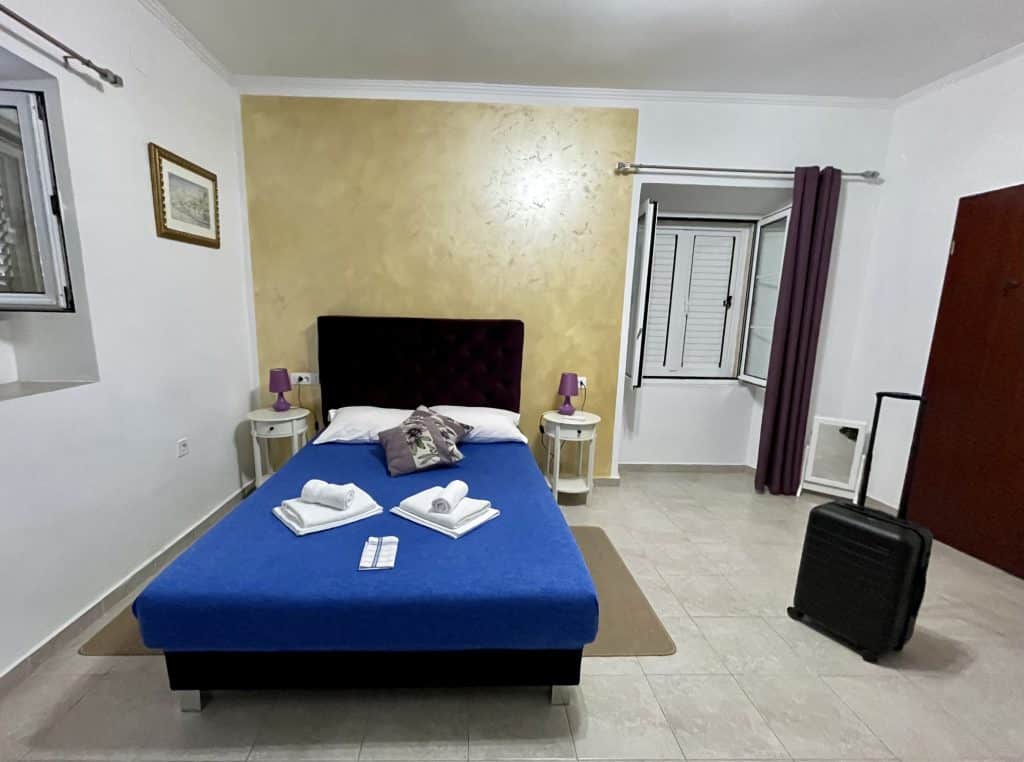
Apartments rule for accommodation in Montenegro.
In Montenegro, like most of the Balkans, apartment accommodation tends to be more popular than hotels. And no, it’s not an Airbnb thing — this is the way things have always been here.
In the pre-smartphone era, it was common for local women in Central and Eastern Europe to stand in train and bus stations with signs reading “apartment.” Even as recently as 2020 in Makarska, Croatia, I saw women on the side of the road holding up signs reading “Apartmenti”!
Sometimes these apartments are considered guesthouses, with several private, lockable rooms available for travelers. To book these places, you can find a lot of them on Booking.com these days. And yes, they are safe. I stay in guesthouses frequently and wouldn’t if they weren’t safe.
And keep in mind that when you stay in an apartment or guest house in Montenegro, you’re (usually) giving money to a local — not buying a hotel chain CEO a third yacht.
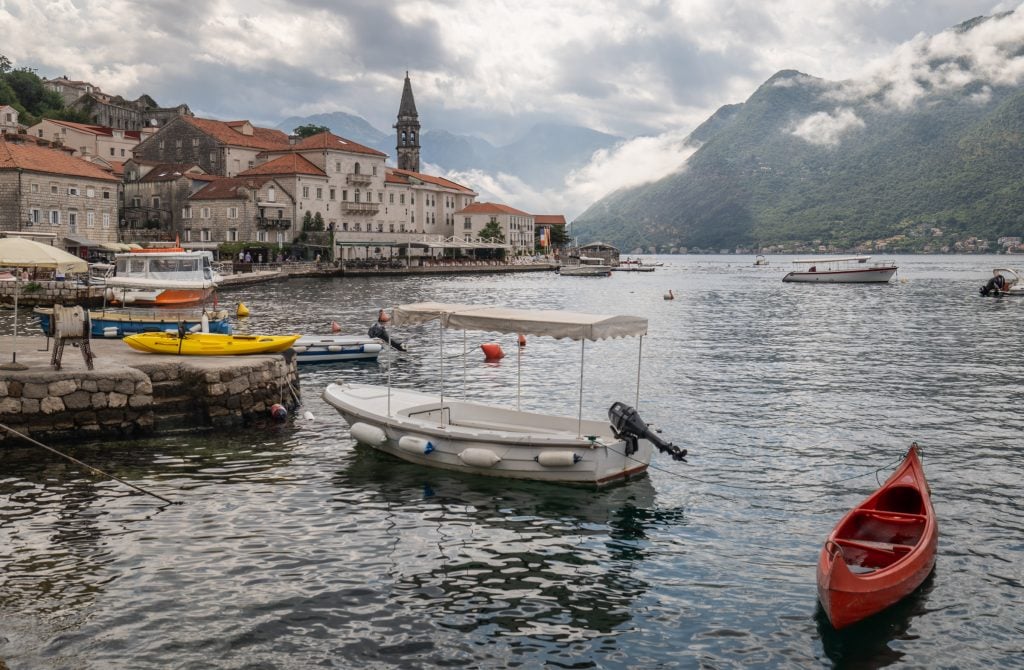
Montenegro is home to four UNESCO World Heritage Sites.
If you love visiting UNESCO World Heritage Sites around the world, Montenegro has four of them: two that are entirely Montenegrin and two that are split between different countries.
First off is the Natural and Culturo-Historical Region of Kotor, and includes the towns of Kotor, Perast, and Risan in addition to the various fortifications and palaces and how they were integrated into the mountainous landscape.
Durmitor National Park is also a UNESCO World Heritage Site, singled out for its biodiversity, glacial lakes, and the second-deepest canyon in the world.
The Stećci Medieval Tombstones Graveyards include a collection of sites in Bosnia and Herzegovina, Croatia, Montenegro, and Serbia. In Montenegro, there are two sites in Žabljak and one in Plužine.
The Venetian Works of Defence between the 16th and 17th centuries are found in Italy include a collection of sites in Italy, Croatia, and Montenegro. The fortifications of Kotor are the lone Montenegrin site.
And keep your eye on the tentative UNESCO list for the future — some Montenegrin sites that have been nominated include the Cetinje historic core, Biogradska Gora National Park, and Ulcinj old town, among others.
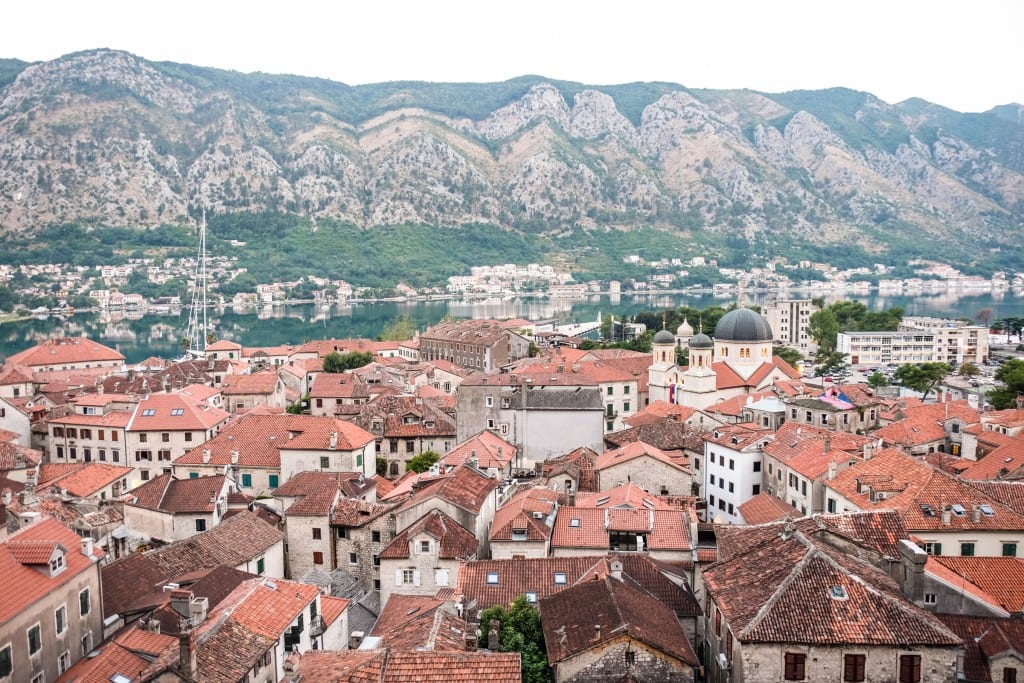
You can see a lot while using Kotor as a base.
Want to have an easier trip to Montenegro without worrying about a car? I recommend using Kotor as a base for your Montenegro trip and exploring from there.
Why Kotor? It has the most tourism infrastructure in the country. Buses head off in several directions from here (if going from Perast to Kotor, for example, you must change buses in Kotor). And many tours depart directly from here.
Spend a few days exploring what Kotor has to offer (and it has a LOT to offer). Hike up to St. John’s Fortress first thing in the morning, visit the Kotor Cats Museum, photograph everything in sight.
Spend one day on a Durmitor National Park day trip. This trip takes in Black Lake, Tara Canyon (no rafting) and Ostrog Monastery; alternatively, you can do a Tara Canyon rafting day trip.
Spend one day on a Great Montenegro Tour, which includes the Kotor Serpentine, Ngejusi, Lovcen National Park, Njegoš Mausoleum, Cetinje, Lake Skadar, and a brief photo stop at Sveti Stefan.
One afternoon, take a boat trip to the Blue Cave, submarine tunnel, and Our Lady of the Rocks.
One day, take the hop-on-hop-off Montenegro bus to Risan, Perast, and Bajova Kula. (Or just take the Blue Line bus for cheaper, perhaps as far as Herceg Novi if you’d like.)
One day, take a bus to Budva and Sveti Stefan.
You can see QUITE a lot of Montenegro — and you’ll be able to lay your head in the same place every night. Not bad at all!
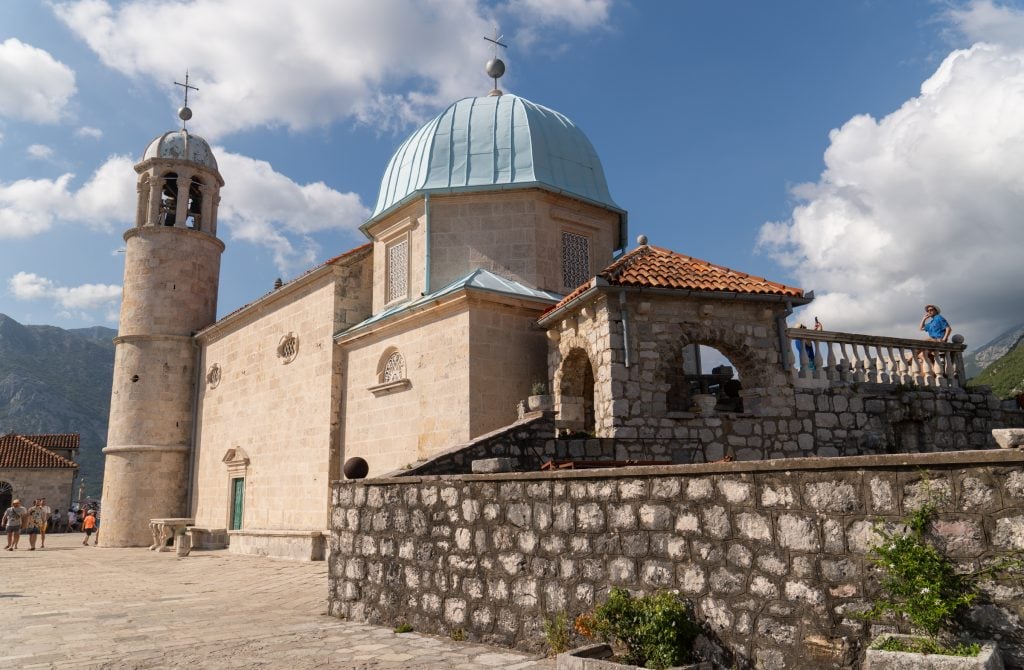
Should you take a day trip to Montenegro from Croatia?
There are so many Montenegro day trips that leave from Dubrovnik. Most of these trips take in Kotor and Perast. If you don’t have much time and you really, really want to experience Montenegro, then yes, you can absolutely do this.
This day trip from Dubrovnik to Montenegro is a good one, including Our Lady of the Rocks (or, alternatively, time in Perast), Kotor, and Budva.
However, you should know that summer traffic between Dubrovnik and Kotor can be rough. I’ve seen it get worse and worse over the years.
Additionally, you’ll need to go through passport control on both sides. And ever since Croatia became part of the Schengen Area in 2023, they’ve been extra strict and thorough with people at crossings.
A day trip to Montenegro means you’ll be sitting in traffic for a LOT of the day, especially if you visit during the summer.
Consider staying overnight, at the very least, if you’re visiting Montenegro from Croatia. You’ll get to see so much more. But if this is your only chance, take the day trip. You’ll still love it.
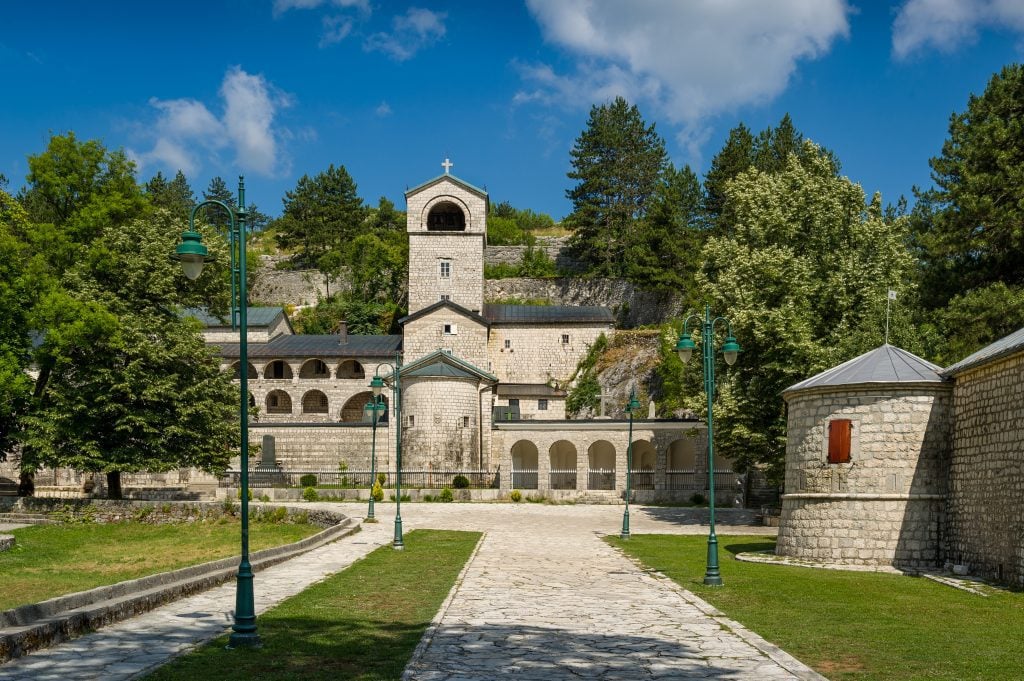
How much time do you need in Montenegro?
How much time should you actually spend in Montenegro? More than a day trip, of course, but how much do you really need?
I recommend spending around one week in Montenegro. I’d recommend spending 3-4 days on the Bay of Kotor — staying in Kotor is easiest, though I loved staying in Perast as a repeat visitor — and your remaining days in one or two other places.
Durmitor National Park makes a great choice; you can also head down into Southern Montenegro with easy access to explore the surroundings, especially if you have a car. Somewhere like Bar, for example, gives you a lot of options.
Is it too far to fly to Montenegro for just one week of travel? You can absolutely extend your trip if you’d like — or add on a short stint in another country. Croatia, Serbia, Bosnia, or Albania would be my top recommendations to add on to a trip to Montenegro.
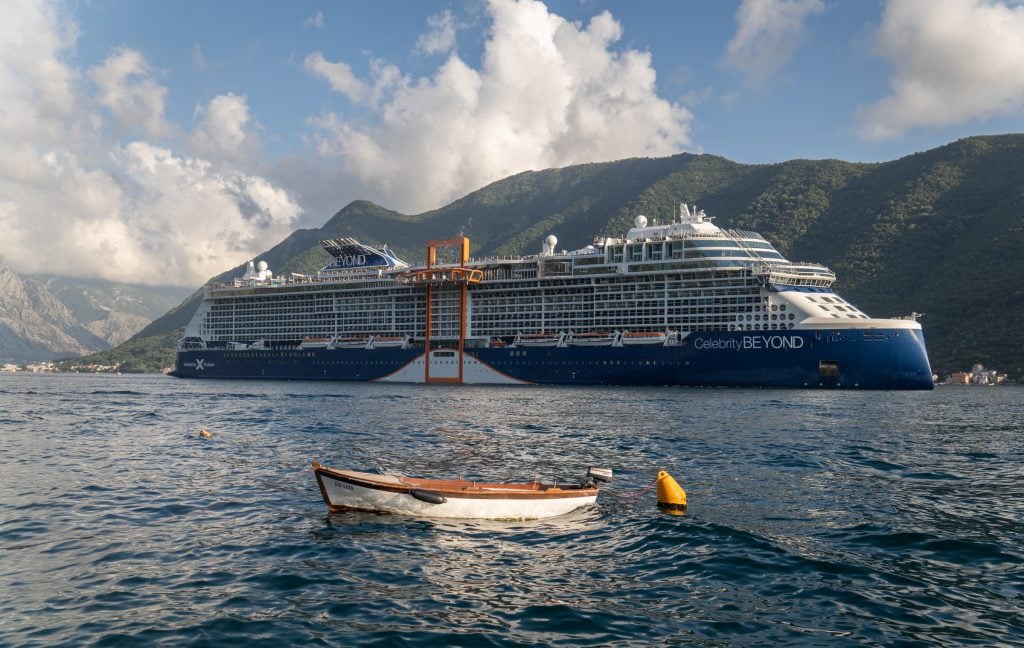
Please don’t take a cruise ship to Montenegro.
Yes, this is something that you hear me say frequently, and it deserves to be repeated. Cruise ships are terrible for most destinations around the world — and that includes river cruises. Cruise ships dump hundreds or thousands of travelers on a destination. They crowd the streets and spend little to no money. Who are they helping, really?
And it is especially egregious to see monstrously large ships sailing through the delicate Bay of Kotor and dropping people in the small city of Kotor. It is TOO SMALL to handle numbers those large.
Recently, Dubrovnik reduced the number of cruises they host. That was a smart move, and should be applauded.
But Kotor picked up the slack. All those cruises are now going to Kotor instead of Dubrovnik.
Do you want to see Montenegro by boat? Can I suggest a Montenegro sailing trip instead, or maybe a Croatia and Montenegro sailing trip? This way you can still travel by boat and have a much gentler impact on local communities. And these trips are insanely fun.
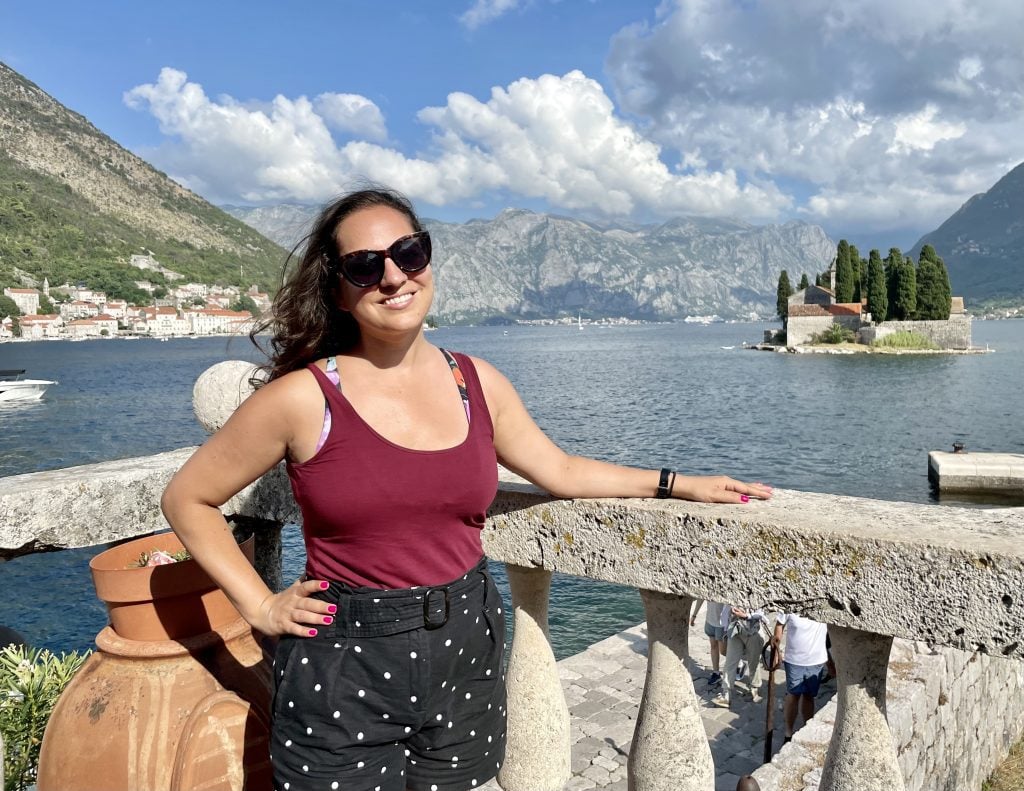
Travel to Montenegro and you’ll be back soon.
Montenegro travel is so worth it — and once you’ve had a taste of it, you’ll be hooked. Even years after my first Montenegro visit, I know I wanted to return to celebrate my birthday here. It’s that kind of place. It just makes everything feel special.
I hope you have the best time in Montenegro! Definitely come back and tell me all about it.
More on Montenegro:
- 30 Fun and Interesting Things to Do in Montenegro
- I was Haunted by a Ghost in Montenegro for 3 days
- 17 Beautiful Things to Do in Kotor, Montenegro
- 30 Stunning Beaches in Montenegro
- 15 Best Things to Do in Budva, Montenegro
More on the Balkans:
- Solo Female Travel in the Balkans: Is it Safe?
- What’s it like to travel in Albania?
- What’s it like to travel in North Macedonia?
- Ultimate 2-Week Croatia Itinerary
Do you travel to Montenegro? What are your tips? Share away!